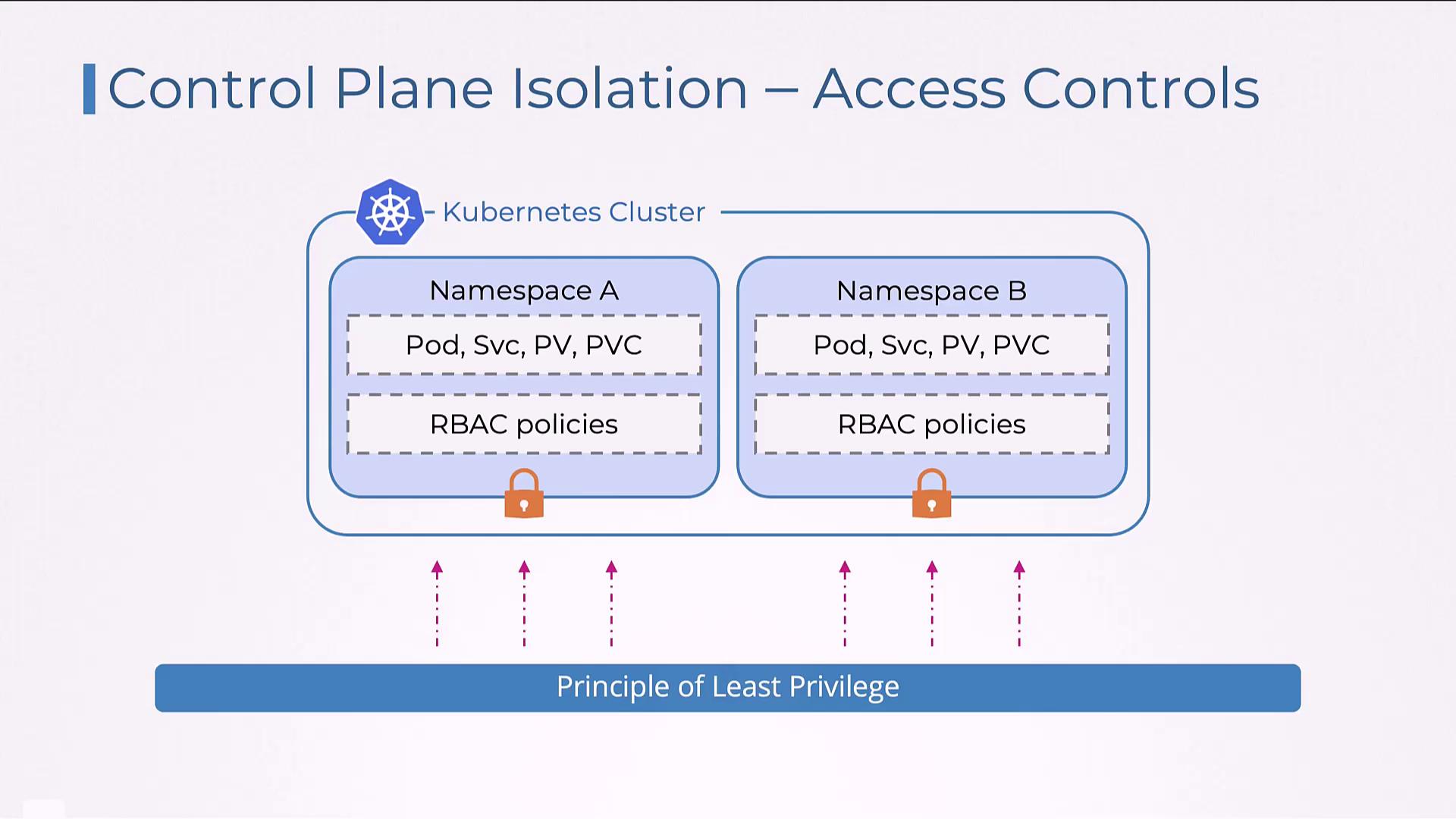Certified Kubernetes Security Specialist (CKS)
Minimize Microservice Vulnerabilities
Control Plane Isolation
In this article, we will explore control plane isolation in Kubernetes—a critical mechanism for ensuring secure, multi-tenant environments. By isolating the control plane, different teams can operate without interfering with each other’s operations. This isolation is achieved through namespaces, access control mechanisms, and resource quotas.
Namespaces Overview
Namespaces offer a way to partition cluster resources among multiple users, ensuring that resources in one namespace remain isolated from those in another. This strategy yields two primary benefits:
- Resource names within one namespace can overlap with those in another, allowing teams to use familiar names without conflicts.
- Many Kubernetes security policies, including role-based access control (RBAC), roles, and network policies, are scoped to individual namespaces.
The diagram below illustrates Kubernetes cluster control plane isolation using namespaces across three nodes. Each node manages different namespaces for effective resource management.

You can create namespaces easily with the following commands:
kubectl create namespace namespaceA
kubectl create namespace namespaceB
Within each namespace, you can deploy pods or services—allowing the same name to be used across namespaces without conflict.
Authorization and Access Control
Proper authorization is the cornerstone of control plane isolation. Without adequate restrictions, teams or workloads might improperly access or modify API resources, undermining security policies. Implementing the principle of least privilege is essential: each team should only access the namespaces and resources they require.
The next diagram emphasizes Kubernetes control plane isolation through access controls. It showcases how namespaces, pods, services, persistent volumes, and RBAC policies work together to enforce the principle of least privilege.

RBAC configurations within each namespace dictate which users or service accounts can perform specific actions, ensuring that permissions are strictly confined to their appropriate scope even when teams share the same cluster.
Example: Role and RoleBinding in the Development Namespace
The following example demonstrates how to create a Role and a corresponding RoleBinding in the "development" namespace. The Role, "developer-role," grants permissions (get, list, watch, create, update, delete) on pods and services. The RoleBinding, "developer-rolebinding," then ties this role to the user "pranjal."
apiVersion: rbac.authorization.k8s.io/v1
kind: Role
metadata:
namespace: development
name: developer-role
rules:
- apiGroups: [""]
resources: ["pods", "services"]
verbs: ["get", "list", "watch", "create", "update", "delete"]
---
apiVersion: rbac.authorization.k8s.io/v1
kind: RoleBinding
metadata:
name: developer-rolebinding
namespace: development
subjects:
- kind: User
name: pranjal
apiGroup: rbac.authorization.k8s.io
roleRef:
kind: Role
name: developer-role
apiGroup: rbac.authorization.k8s.io
Note
This configuration enforces strict access control, ensuring that user "pranjal" can only perform the defined actions on pods and services within the "development" namespace.
Summary
Control plane isolation in Kubernetes is essential for maintaining a secure and efficient multi-tenant cluster environment. By effectively using namespaces along with tightly scoped RBAC policies and access controls, organizations can ensure that each team operates within its designated boundaries without affecting others.
For more information, explore our additional resources on Kubernetes Basics and Kubernetes Documentation.
Watch Video
Watch video content